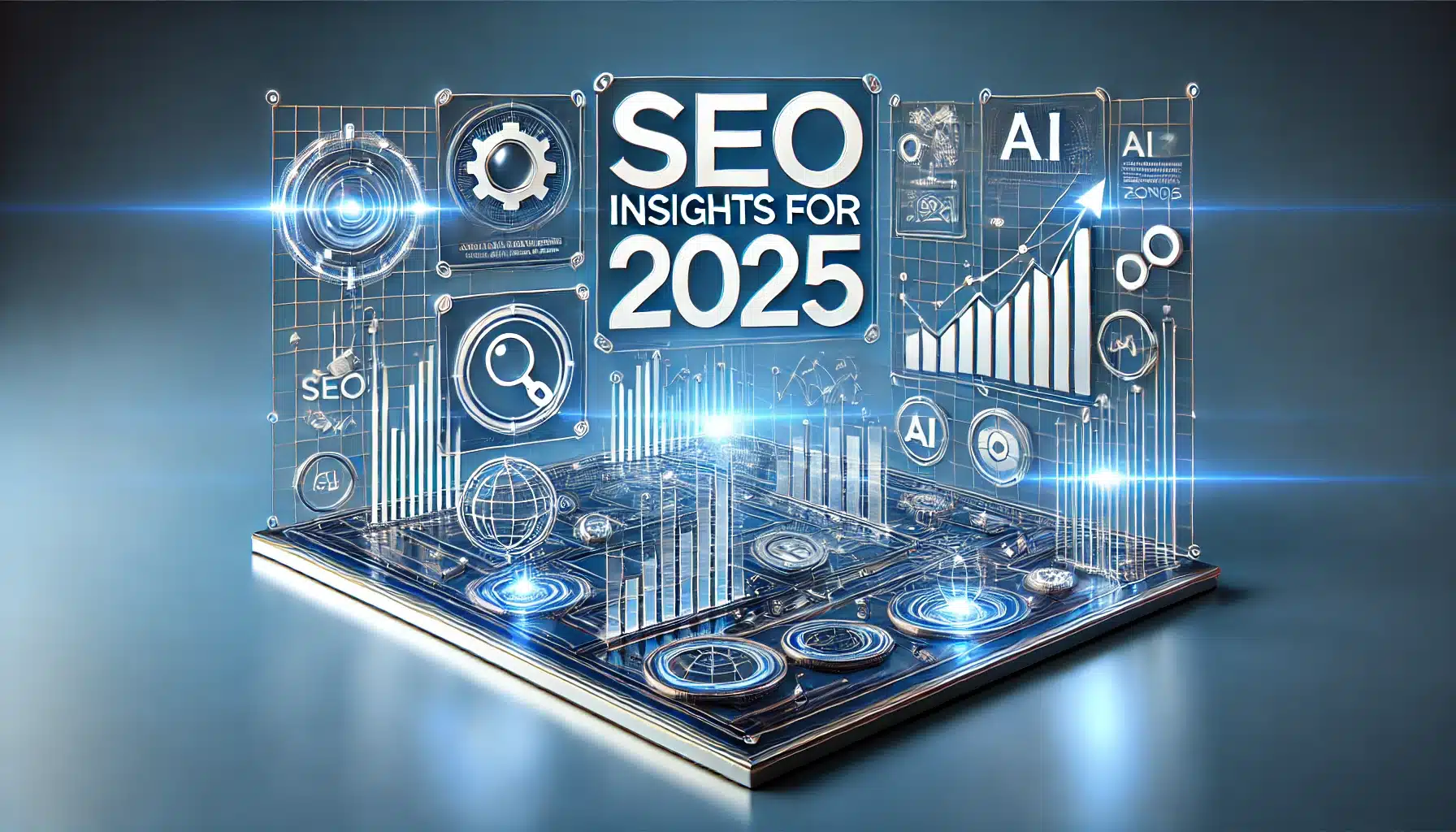EDITOR’S NOTE: Digital marketing is constantly changing, and staying in the loop on marketing trends is necessary in order to have successful campaigns. For the past few years we’ve seen marketing shift from selling a fantasy being most effective to relatability and personalization being more effective. We started seeing this with the rise of social media stories, and it continued on with brands using conversational marketing and collaborating more with creators than celebrities. We started seeing social issues become more important as especially young people began questioning companies’ diversity, sustainability practices, and asked for the option to attend events virtually. Lastly, we noticed that people wanted answers to their questions right away. This raised the need for voice search, geo-fencing, and things like chatbot customer service. If you have any questions about digital marketing or want us to do it for you, reach out to Prebuilt Sites or The BBS Agency. We’d love to help you out!
Get a head start on your digital marketing strategies for 2022 by knowing the most important up-and-coming trends ahead of schedule.
Shannon Hilson Rock Content Writer
Staying ahead of the digital marketing game is about more than just understanding and applying basic industry principles.
The digital world is ever-changing, as is every member of your target audience, so a huge part of successful digital marketing is staying in the know when it comes to trends.
Trends can come and go in the marketing world just as quickly as they do in fashion, tech, or pop culture. But it’s easy enough to stay ahead of the game.
By analyzing past trends and staying aware of ongoing changes, marketing experts worldwide can get a pretty good read on what’s next for the coming year.
In 2021, individuals and businesses worldwide have been thoroughly engrossed in recovering from the COVID pandemic, one of the most jarring global shocks to hit us in a while.
In 2022, industries everywhere will continue responding and adapting to the associated changes.
Here’s a closer look at essential digital marketing trends.
- 1. Interactive Content
- 2. Conversational Marketing
- 3. Voice Search
- 4. Hybrid Gatherings and Events
- 5. Social Media Stories
- 6. Geofencing
- 7. First-Party Cookies
- 8. Environmentally Responsible Marketing
- 9. Creator Collaborations
- 10. Quantum Computing
- 11. Human-First Data Experiences
- 12. Progressive Web Apps
- 13. Security as a Priority
- 14. Diversity and Representation
- Wrap Up: Successful Marketing Campaigns Start with Thorough Planning
1. Interactive Content
As social media continues to connect consumers and the brands they buy from on exciting new levels, the idea of what it means to have a relationship with a brand is evolving.
Yes, your customers want to interact with you on a more personal level. But people are also looking for content experiences that go beyond just traditional text, no matter how snappy that text might be.
Interactive content has been one of the fastest-growing trends in marketing for a while now, and you can expect that to continue into 2022.
Stay ahead of the curve with creative, immersive marketing materials that invite your audience to become part of the experience.
Great examples include but aren’t necessarily limited to:
- 360-degree virtual reality videos and 3D images.
- Helpful tools like interactive calculators.
- Augmented reality materials.
- Polls, quizzes, and questionnaires.
In fact, it’s worth noting that interactive content receives two times more engagement than static content.
Content types like the above examples offer consumers the personal connection, engagement, and freshness they want in the branded content they consume.
And they help boost your bottom line by being memorable and raising conversion rates.
2. Conversational Marketing
In the interest of forging increasingly personal relationships between brands and consumers, more businesses are adopting a conversational approach to many aspects of how they communicate with their audiences, including via marketing.
When today’s consumers want to get in touch with a business, they don’t want to wait days or even hours to hear back, and marketers everywhere are taking note.
According to research, 82 percent of modern consumers want an immediate response from a business should they have a question or concern.
They want what they’re looking for right when they’re looking for it, even if that happens to be at an odd hour. Otherwise, they may go elsewhere.
Conversational marketing takes the guesswork out of giving customers what they want by leveraging a dialogue-focused communication style to drive engagement and convert leads.
Examples include:
- Personalized email exchanges.
- Chatbots and virtual sales associates.
- Personalized media, such as video.
The beauty of conversational marketing is that you can use it via nearly any channel, making it easier than ever to meet your customers where they live.
Because they don’t just want to talk to you. They want and expect to do it on the platforms and at the times that suit them best.
In 2022, you’ll want to make sure you’re doing precisely that.
3. Voice Search
Have you ever started a web search by verbally asking your virtual Alexa or Google assistant a question instead of typing it into a browser or app?
If so, then you’re already familiar with the convenience voice search brings to the table.
Voice search isn’t just popular these days. It’s becoming a massive part of how nearly everyone finds the information they’re looking for.
This includes information about products, services, or brands they’re interested in.
And the more nuanced and specific options like Alexa or Google Assistant become, the more comfortable consumers everywhere will become with using them.
As it stands, over a billion voice searches occur every single month, and over 20 percent of all web searches are voice searches.
In addition, just under half of all people say they use voice search daily, and just over half have expressly stated they’ve used it to find info on businesses in their area.
So what does that mean for your 2022 marketing campaign?
Voice-activated ads are just around the corner, meaning getting prepared now could make your material what Alexa or Google handpicks in response to a spoken search query.
Virtual assistants will eventually start returning sponsored content alongside relevant answers, as well.
Start thinking about ways to incorporate these changes into your marketing campaign sooner rather than later.
4. Hybrid Gatherings and Events
When COVID first hit, people were devastated over the fact that activities like parties and in-person events were a no-go for the foreseeable future.
Virtual events rose in popularity to fill the gap and succeeded quite nicely.
However, marketers have some tough choices to make now that people are slowly becoming comfortable resuming their everyday lives.
While some consumers were thrilled to start getting back to normal and gathering with other people in person again, others felt differently.
During the pandemic, they not only got used to virtual events but found they preferred them and wanted to keep attending them.
In other words, marketing professionals now have two different audiences to appease.
That’s precisely why you can expect hybrid events that provide the best of both worlds to be huge in 2022.
So definitely move ahead with your plans to schedule live events, but make sure you include a virtual component to keep those who’d rather attend at a distance happy.
Think up-and-coming immersive technologies like virtual reality or augmented reality, in addition to live streaming options.
5. Social Media Stories
Since Snapchat first pioneered the idea years ago, social media stories have been red hot.
Instagram would be the next to jump on the bandwagon, followed by other big platforms like Facebook, YouTube, and even Twitter.
At this point, it’s safe to say that stories are more than a digital marketing trend. They’re here to stay and can be expected to increase in popularity over 2022 and beyond.
Stories differ from traditional social media posts in that they’re only available for 24 hours.
That makes them a perfect avenue for individuals and businesses alike to share rawer, more genuine posts more frequently with those who’d like to see them.
Effective ways top brands have been leveraging stories to reach their audiences include:
- Experimenting with live video.
- Reaching out to specific geographic audiences by using geofilters and location tags.
- Encourage consumers to act on timely offers via powerful calls to action.
- Gathering data in a fun, casual way with polls.
In 2022, more brands will be looking for ways to drive customer relationships and cultivate authentic connections via story-like features across all the big platforms.
Make sure yours is among them, and it will be tough to go wrong.
6. Geofencing
Location-based marketing has been around a while, but it’s evolving in some exciting ways every digital marketer will want to be aware of.
Geofencing, in particular, is an innovative marketing technique expected to grow exponentially in 2022 and on through 2023, right along with the expanding importance of mobile technology.
Geofencing takes locational marketing to the next level by marketing to consumers on a real-time basis as they physically move through their days.
For example, the target area for a specific shop or restaurant might be a radius of a mile or two. If a user enters that radius, they may receive a text or a push notification containing an appropriate message.
Geofencing is currently being used to help consumers locate services they may need more quickly to the tune of great success.
For instance, associated ads are taking the guesswork out of getting gas, finding someplace to eat, or securing a place to stay while people are traveling.
And since people find the notifications so helpful, the conversion rates are solid.
Expect this to become even bigger for companies and businesses of all types that need a reliable go-to way to get more digital users through the doors of a physical location.
7. First-Party Cookies
With consumers becoming increasingly concerned with how their personal information is used, laws are now entering the books that drastically restrict what marketers can do with such data.
Because of this, the marketing world is looking at the pending end of third-party cookies.
Up until now, third-party cookies have been the driving force behind many of today’s most widely used marketing tools.
They made it possible to collect insane amounts of data that could then be used to personalize their advertising and make their ongoing marketing campaigns more accurate.
A switch to first-party cookies will force marketers to rely on only their own collected data.
This, in turn, will make it essential to be more mindful about what data a company collects and how exactly it’s used, which is in line with the trending “people first” approach to marketing.
Here are a few tips for preparing your marketing campaign for the switch.
- Employ a full transparency approach as to how you use your customers’ data.
- Leverage the power and reach of multiple marketing channels to maximize the amount of helpful data you can collect from your audience.
- Invite your customers and web visitors to opt into your data collection efforts in a polite, friendly manner.
- Give your web visitors and customers the ability to modify the way their data is collected and used, so they always feel like they’re in the driver’s seat.
8. Environmentally Responsible Marketing
Sustainability is becoming increasingly important to modern consumers, especially younger ones.
Research shows that an impressive 75 percent of all millennials will happily pay more for products manufactured with sustainability in mind.
That’s big news for brands looking to stay in step with current social trends, as well as get through to coveted younger audiences.
It’s also an incredible way to gain a substantial competitive advantage in your industry over 2022 and beyond.
Leverage the existing or potential sustainability of your products and services in ways like the following:
- Weave green ideas and business practices into your ongoing company culture.
- Certify your business via options like Green Seal or Green America, where it makes sense to do so.
- Show that your brand supports green initiatives in your marketing materials and via your various social media streams.
9. Creator Collaborations
The creator economy has been growing for a while now, but it’s positively booming right now and will only get bigger moving into 2022.
Young, forward-thinking people are looking for ways to make a good living doing something that also feeds their souls, and independent creatorship is a perfect fit.
Creators are also experts at making personal, organic connections with consumers.
That means it’s increasingly crucial for brands to reach out to independent creators and form mutually beneficial partnerships.
Modern consumers find the influencers they follow on social media highly relatable.
They’re also fiercely loyal and are highly likely to sit up and take notice of a favorite influencer’s suggestions. Partnering with the right ones gives you priceless access to new, highly convertible audiences.
In addition to including influencers and creators in your ongoing marketing strategy for 2022, you’ll want to keep track of how creator culture will likely evolve next year.
Keep the following factors in mind when considering your 2022 collaboration plans.
- Expect top creators to become increasingly influential in the media world as consumers continue to shift their focus from traditional options (like television) to online media.
- More creators will continue to supplement blossoming social media presences with monetization options of their own. Think Substack newsletters, personal blogs, and web apps.
- More creators are throwing their hats into the ring by launching brands of their own and brainstorming products relevant to their audiences.
10. Quantum Computing
The theory of quantum physics states that subatomic particles can and do exist in more than one state at the same time.
Quantum computing is an emerging technology based on the theory of quantum physics. Here’s a breakdown of how it works.
If you gave a traditional computer the task to read every book in a particular library, it would accomplish that task by reading each book the way a human would — in a linear manner, one book after the other.
Yes, it would read the books much more quickly than any human, but it would still absorb the data in the same way.
On the other hand, a quantum computer is capable of accomplishing the same task, but it is also capable of reading all of the books in the library simultaneously.
Watch for quantum computing to come into play within the marketing sector in 2022 and the years to follow.
Some of the ways you can expect it to change the face of how digital marketers reach their audiences include:
- Drastically improved machine learning capabilities and increasingly realistic AI assistants, as with Google or Alexa.
- Drastically improved mobile data coverage.
- Targeted ads that are both increasingly accurate, easier to deliver to a broader range of people, and cheaper to produce overall.
11. Human-First Data Experiences
Personalization is still the order of the day for the experiences consumers prefer, and that will continue to be the case in 2022.
Not only do personalized emails, products, content choices, and so forth help customers feel catered to, but they reinforce the feeling that they have a close, personal relationship with the brands they buy from.
However, there’s a fine line between personalization that feels helpful and personalization that’s crossing a line and becoming creepy.
That said, human-first data experiences that consider the consumer’s likes and dislikes as to how their data is used will be huge in 2022.
Marketers can keep people at the forefront of what they’re doing by:
- Designing advertising experiences with value in mind.
- Being as transparent as possible with customers about why they’re seeing certain ads, why they’re receiving specific recommendations, and so forth.
- Giving the consumer a say in the type of data-sharing experience they have with your company.
In 2022 and beyond, the savviest marketers will develop campaigns that make the most of customer data to improve consumer experiences and raise conversion rates.
However, they’ll do so while respecting the customer’s preferences and personal boundaries regarding their sensitive information.
12. Progressive Web Apps
The more people rely on their mobile devices, and the more comfortable they become accessing the web while on the go, the more critical complete mobile compatibility becomes.
Smartphone apps are still terrific ways to stay connected to your customers. However, they’re still often either Android or iOS exclusive.
Progressive web apps (PWA) strike an outstanding balance between the streamlined experience of an app and the more comprehensive experience you can get from a website.
In essence, they’re websites, but with an app’s functionality.
For instance, you can access them offline, enjoy speedy load times, and enable push notifications.
Experts predict that by 2026, the number of smartphone users will rise to 7.5 billion, and digital marketers can expect the prevalence of PWAs to grow with it.
That trend starts right now as we move into 2022, so make sure you stay ahead of the curve and get prepared.
13. Security as a Priority
Consumers want to feel safe with the brands they do business with, and they need to feel that way about you before you can count on them to become loyal customers.
Privacy is definitely a huge part of that, but so is the overall security of your websites and shopping interfaces.
When visiting a new site, web visitors decide whether it looks safe or not within mere seconds. If anything whatsoever sends the wrong signal, they’ll leave and go somewhere else.
Not only are high bounce rates bad for business, but they’re bad for your Google ranking, as well.
Enable HTTPS protocol for your site to help signal that it’s secure.
Display a trusted security seal customers will recognize right where everyone can see it, as well. Clean designs and quick load times help inspire trust in web visitors, as well.
14. Diversity and Representation
Inclusivity is no longer just a human resources concern. Modern consumers are becoming more and more socially aware.
They not only expect to see themselves and their loved ones represented in media and advertising but others along the grand spectrum of humanity, as well.
Savvy marketers are taking note, as diversity is a big deal now, and it will continue to be a big deal in the years to come.
According to recent research conducted by Adobe, 61 percent of people stated that they felt diversity in advertising was important.
An additional 38 percent said they trust brands that ran inclusive ads more readily. However, over 120 million American consumers said they rarely to never see people like them shown in advertising.
With nearly half of the coveted millennial market identifying as a minority of one kind or another, representation isn’t just a good idea when it comes to your marketing strategy.
It’s a must if you’re serious about keeping your company growing.
Diversity-related factors to focus on as you steer your company into 2022 include:
- The language you use to discuss different types of people, their value systems, and their pain points, including symbols and phrasing.
- Who the average member of your target audience likely is from a cultural dynamic and how you can better tailor your messages and imagery to them.
- Whether the language you use accurately represents the full range of people who might use your products or view your advertising.
Wrap Up: Successful Marketing Campaigns Start with Thorough Planning
The great thing about digital marketing trends is that they aren’t just powerful.
They’re also predictable, so a little research and planning are all it takes to stay ahead of the game and get the results you’re after.
Now that you’re in the know of some of the biggest upcoming digital marketing trends for 2022, it’s time to start putting together your strategy for the year to come.
Our comprehensive planning bundle has everything you need to get started on the right foot, including budget planning tools, marketing calendars, and plan templates.
Get started today!
Originally posted on Rock Content.




